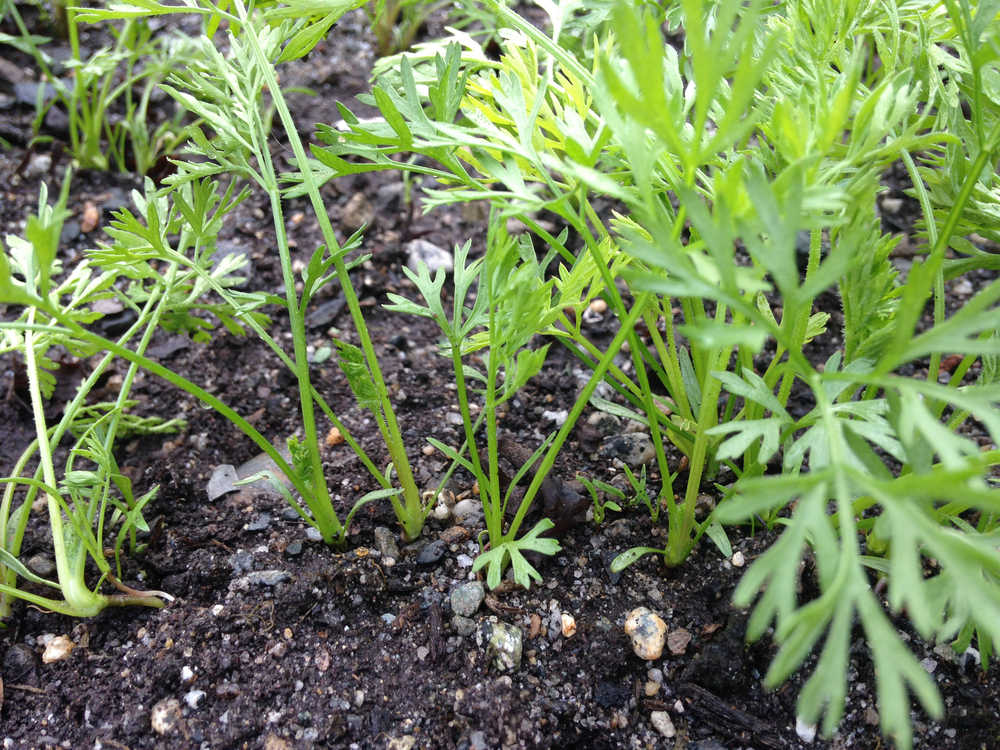All the work in spring begins to emerge around this time. Some of it offers nice surprises with displays of abundance while others provide only disappointment. The gardeners that I know tend to be a bit pessimistic, focusing on the problems rather than on the successes.
My daughter plays violin. Years back she was preparing for a concert and playing the song “Happy Farmer” by Schumann. I kept calling it Happy Camper, which annoyed her. In my defense, I insisted that I had never met a happy farmer.
When I look at my garden, I see the gaps where things didn’t grow. This is especially true with carrots. It seems that throughout Juneau, people had straggly carrots instead of nice fernlike rows. I have one garden bed where there are solid rows of beets on one side framed by neat and tidy rows of parsnips, while the middle consists of a few carrot plants growing here and there.
Even though it’s late in the season, I replanted carrots in a few places. I’m hoping that the conditions will be better, although it also means that I’ll be harvesting in mid to late September. In the places where I have some carrots, I’ll plant radishes or other greens to fill in the spaces and to keep the soil loose. It will also help me feel better about the carrots I won’t be able to harvest.
I’m continuing to regularly harvest my greens. In addition to lettuce on my back deck, I have arugula and New Zealand spinach growing out in my community garden plot. Despite its name, it isn’t a true spinach but has a similar taste. The advantage to this plant versus spinach is that it is slow to bolt.
Bolting is when a plant produces a seed stalk. In our short growing season, we fight against plants’ natural urge to produce seeds. Plants are highly tuned to temperature conditions and variances in the length of daylight. They have an intrinsic need to create seeds.
If the outside temperatures drop after a crop is planted, the plant will panic and work very hard to shorten their life cycle in order to produce seeds before they die. Plants also respond to changing light conditions, which is why they grow the seed stalk or why they tend to die off in mid-August when our daylight decreases.
As gardeners, we want to harvest the plant for as long as we can. One way to do that is to plant seed varieties that are slow to bolt. Another way is to continually harvest the plant so that it will use its energy growing, rather than in seed production.
Unless you are meticulous about cutting arugula back, it will go to seed. But, if you like arugula, it can be a good plant to fill in those missing gaps. As one of the common variety states, it rockets up, making a nice change from empty space. It might not make you a happy farmer, but it might make you a little less sad.
• Corinne Conlon is a freelance writer based out of Juneau. She can be reached at dirtgirlgardening@gmail.com.

